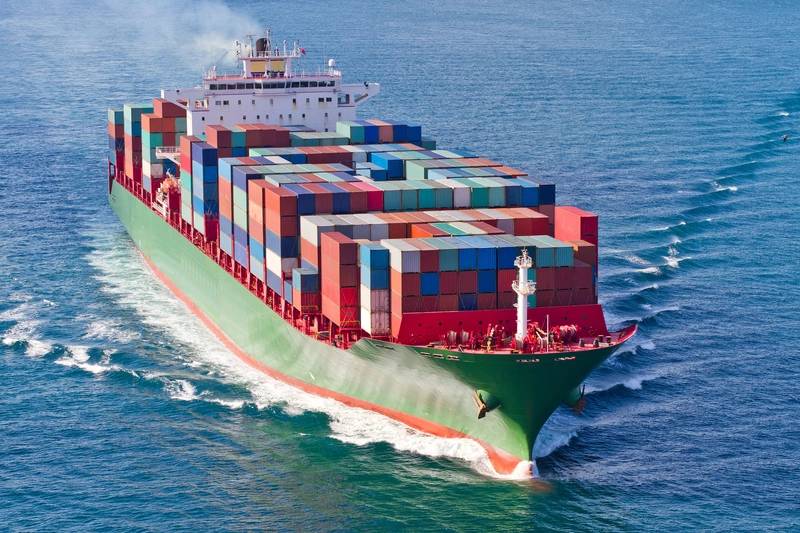UMAS Says Energy Efficiency Needs to Improve by 40%
A new report by maritime advisory service UMAS has put figures on the energy efficiency improvements that are needed for international shipping if it is to meet the IPCC-derived 1.5ºC decarbonization pathway.
This magnitude of GHG reduction, 37% in 2030 and 96% in 2040 on a 2008 baseline, has also been championed by some states as the targets that IMO should use in its revised GHG reduction strategy – due for adoption at MEPC 80 in July this year.

UMAS states that, irrespective of how new fuels enter the global fleet, the 2030 target predominantly needs a further step change in energy efficiency in the global fleet by 2030, approximately 40% improvement in efficiency compared to 2018, or 55-60% greater efficiency than the fleet’s average efficiency in 2008. These figures are similar to the approximately 32% efficiency increase seen between 2008-2018 but are significantly higher than the target set in the IMO’s initial strategy.
Jean-Marc Bonello, Principal Consultant at UMAS, said: “Industry is increasingly under pressure to align with 1.5ºC and has broadly embraced that this can only be achieved by a fuel transition. However, this may distract from the fact that significant gains in energy efficiency through technologies, including wind assist, and operational measures are needed this decade so start reducing GHG now. There are well known options, that will not see significant uptake without much stronger regulatory and voluntary focus and attention.”
The UMAS study shows the use of LNG is irrelevant to the GHG reductions achieved in 2030 and that the greatest attention in the 2020’s is needed for the hydrogen-derived fuels’ supply chain development. This is not because these have a significant impact on GHG emissions in 2030, but because without action in the 2020’s, the scale-up will not enable the deeper GHG reductions required by 2040.
Tristan Smith from UMAS said: “International shipping is currently on track for a complacent 2020’s, followed by a highly disruptive 2030’s caused by a turbulent, expensive and late fuel transition. The greater the efficiency gains in the 2020’s, the lower the investment needs and costs associated with fuel transition, and the longer the time available for fuel transition. At present the 2030 ambition/target and by association the efficiency opportunity, are not getting the attention they deserve, at the expense of the industry and those it serves.”
The IMO has a key role to play in enabling the global fleet’s efficiency improvement – first by adopting an increased 2030 ambition in July this year, and then through a revision of short-term measures (CII and EEXI) to ensure regulation incentivises the increased ambition, says UMAS. The short-term measures are currently scheduled for revision in 2026, but unless IMO adopts a 1.5ºC-aligned 2030 ambition in July 2023, that revision process will be unlikely to result in 1.5 ºC -aligned policy. Any attempt by regulators to suddenly and significantly change the efficiency objectives for 2030 in 2026 will be understandably objected to by industry if it hasn’t been clearly signposted in 2023.
Three options are identified that should each result in 1.5°C-aligned GHG emissions by 2030:
Option 1 – Focus only on short-term measures (e.g. the CII and EEXI), and no need for midterm measures (e.g. forthcoming new policies such as carbon pricing and/or fuel standards). Short-term measures need modification to WtW GHG emissions, and the option requires a 12% annual reduction from 2027 for the CII.
Option 2 – Focus short-term measures on energy efficiency improvements (to achieve a 38% average efficiency improvement 2019-2030), and focus mid-term measures on fuel substitution that lowers fuel GHG intensity ~15% by 2030. This requires a 9% annual reduction from 2027 for CII.
Option 3 – Focus short-term measures on energy efficiency improvements and midterm measures on fuel substitution, but using regional regulation and voluntary initiatives to drive compliance beyond the IMO thresholds (e.g. fleet average CII moves to ‘A’ band). This requires a 4.5% annual reduction from 2027 for CII.
Complimenting the IMO process, the study identifies that countries and regions can unilaterally incentivise efficiency improvements by encouraging ships with the highest CII ratings to use their ports. Concurrently, industry-led voluntary initiatives can work to set clear frameworks for transparent target-setting and reporting between different stakeholders and to the market. These initiatives can remove the well-known incentive structures that currently inhibit greater technological and operational energy efficiency (sail fast then wait, demurrage etc.).
